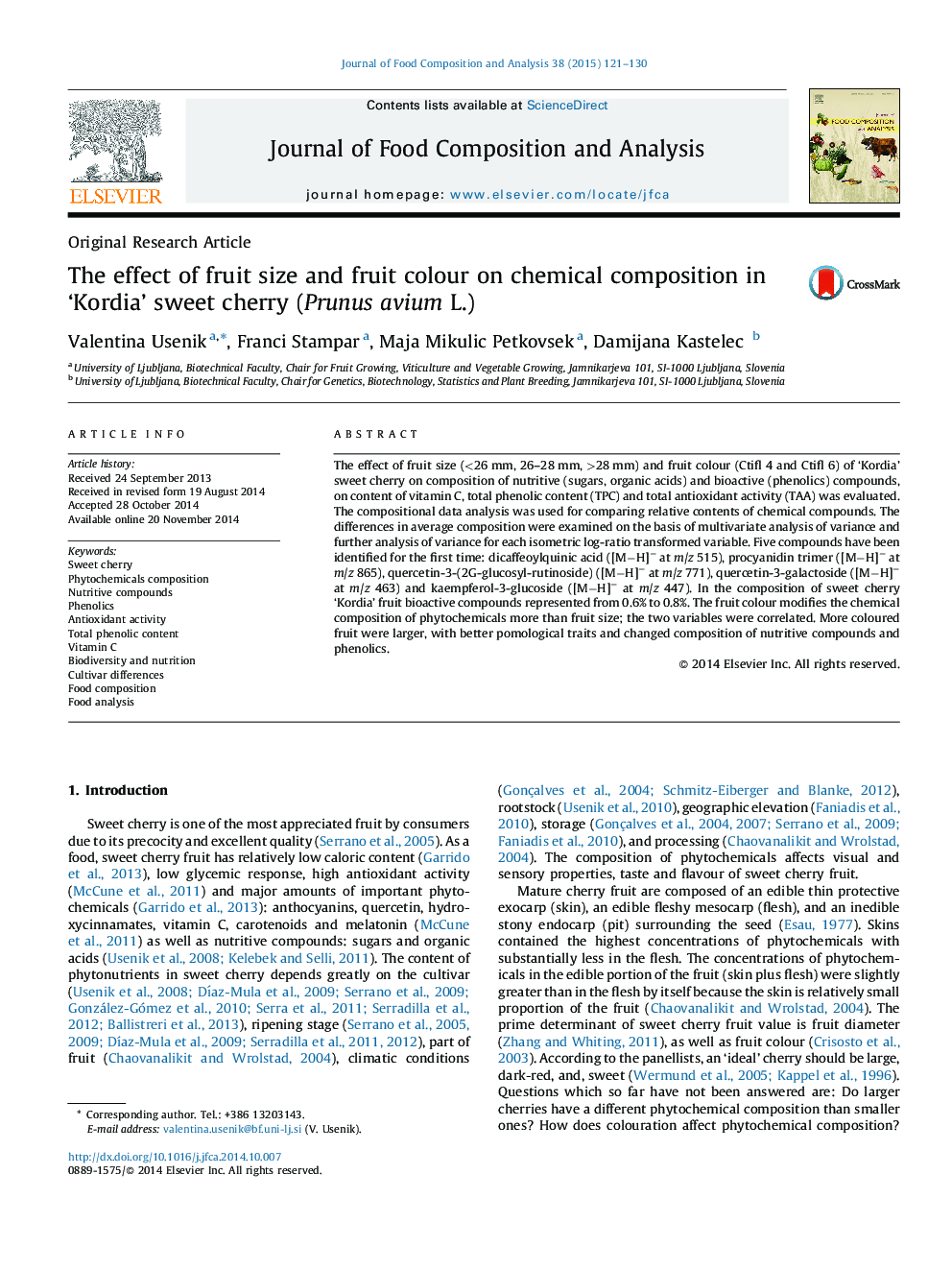| Article ID | Journal | Published Year | Pages | File Type |
|---|---|---|---|---|
| 1218153 | Journal of Food Composition and Analysis | 2015 | 10 Pages |
•Fruit colour affects chemical composition more than fruit size.•Total antioxidant activity was not correlated with either phenolics or vitamin C.•Bioactive compounds represent from 0.6% to 0.8% of ‘Kordia’ sweet cherry fruit.•Five compounds have been identified for the first time.
The effect of fruit size (<26 mm, 26–28 mm, >28 mm) and fruit colour (Ctifl 4 and Ctifl 6) of ‘Kordia’ sweet cherry on composition of nutritive (sugars, organic acids) and bioactive (phenolics) compounds, on content of vitamin C, total phenolic content (TPC) and total antioxidant activity (TAA) was evaluated. The compositional data analysis was used for comparing relative contents of chemical compounds. The differences in average composition were examined on the basis of multivariate analysis of variance and further analysis of variance for each isometric log-ratio transformed variable. Five compounds have been identified for the first time: dicaffeoylquinic acid ([M−H]− at m/z 515), procyanidin trimer ([M−H]− at m/z 865), quercetin-3-(2G-glucosyl-rutinoside) ([M−H]− at m/z 771), quercetin-3-galactoside ([M−H]− at m/z 463) and kaempferol-3-glucoside ([M−H]− at m/z 447). In the composition of sweet cherry ‘Kordia’ fruit bioactive compounds represented from 0.6% to 0.8%. The fruit colour modifies the chemical composition of phytochemicals more than fruit size; the two variables were correlated. More coloured fruit were larger, with better pomological traits and changed composition of nutritive compounds and phenolics.
